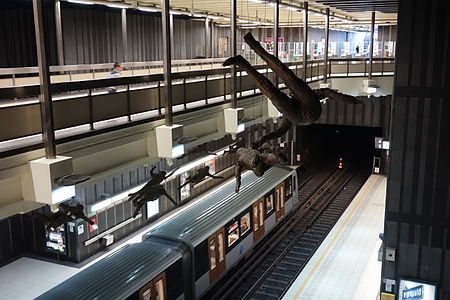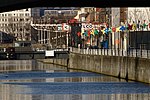Comte de Flandre/Graaf van Vlaanderen metro station
Belgian railway station stubsBrussels Metro stubsBrussels metro stationsMolenbeek-Saint-JeanRailway stations opened in 1981

Comte de Flandre (French) or Graaf van Vlaanderen (Dutch) is a Brussels metro station located in the municipality of Molenbeek-Saint-Jean, in the western part of Brussels (Belgium). It opened on 8 May 1981 as part of the Sainte-Catherine/Sint-Katelijne–Beekkant extension of former line 1. Following the reorganisation of the Brussels metro on 4 April 2009, it is served by lines 1 and 5, which cross Brussels from east to west. It takes its name from the nearby Rue du Comte de Flandre/Graaf van Vlaanderenstraat.
Excerpt from the Wikipedia article Comte de Flandre/Graaf van Vlaanderen metro station (License: CC BY-SA 3.0, Authors, Images).Comte de Flandre/Graaf van Vlaanderen metro station
Rue Sainte-Marie - Sint-Mariastraat,
Geographical coordinates (GPS) Address Nearby Places Show on map
Geographical coordinates (GPS)
| Latitude | Longitude |
|---|---|
| N 50.854722222222 ° | E 4.34 ° |
Address
Vandermaelen
Rue Sainte-Marie - Sint-Mariastraat 11;13
1080
Belgium
Open on Google Maps









